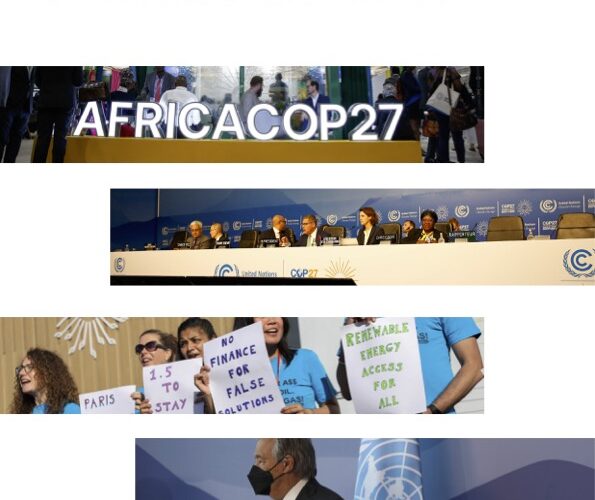The 27th session of the Conference of the Parties to the UN Framework Convention on Climate Change convened in Sharm el‐Sheikh, Egypt, in a context of colliding crises.
Climate Focus’s COP27 briefing note touches on global challenges, Loss and Damage, finance, negotiations on Article 6, adaptation, and discussions outside the negotiation rooms.
Highlights from COP27 include:
- The 27th Conference of the Parties to the UNFCCC, coined the “implementation COP” by the Egyptian Presidency, made history as the second most-attended Conference of the Parties ever. Negotiators and observers convened in an extremely challenging context marked by a global energy crisis and heavy criticism of the host country’s track record on human rights.
- The main breakthrough from the negotiations came in the form of a decision to set up a fund for loss and damage resulting from climate change, a major victory for developing countries and great success for the Egyptian Presidency. While the technicalities of the fund remain to be decided, including who will pay and to whom, this landmark decision has been hailed as historical by most Parties and observers.
- The interests of developing countries were at the forefront of the negotiations on climate finance, with the Sharm el-Sheikh cover decision urging developed nations, once again, to meet their USD 100 billion pledge, and insisting that future commitments should speak of trillions, not just billions. The Parties reiterated that the on-going discussions on the new collective quantified goal on climate finance need to consider the needs and priorities of developing countries.
- On carbon markets and Article 6 of the Paris Agreement, COP27 took the minimum decisions needed to further enable Article 6.2 transactions, while some progress was made in operationalizing the Article 6.4 mechanism. However, negotiations continue to progressat an uncomfortably slow speed relative to the need for urgent climate action. The first issuance under the Article 6.4 mechanism is expected to take place in the second half of 2024 at the earliest, with much work remaining to be done.
- Outside of the formal negotiations, several initiatives ensured follow-up on announcements made at COP26, most notably around forest- related targets and clean technologies. They also highlighted concerns of the most vulnerable nations and draw attention on the need for robust carbon markets that benefit developing countries.







